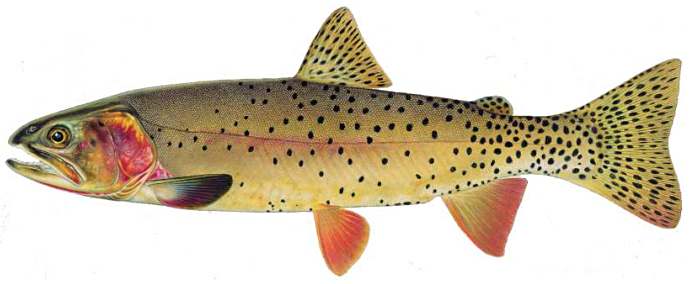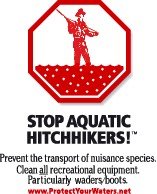WHICH WAY THE WIND ?
Light, Variable, Directional
up slope - down slope
 .. It's often heard in the neighborhood: "Yellowstone Makes It's Own Weather." Well - sorta does and sorta doesn't.
.. It's often heard in the neighborhood: "Yellowstone Makes It's Own Weather." Well - sorta does and sorta doesn't. .. The Yellowstone Plateau, fortuitously situated at the eastern end of the Snake River Plain, abruptly interrupts the prevailing winds. The difference in elevation between the plain and the peaks of the plateau is about a mile, (Pocatello, Idaho=4,462, Mt. Washburn=10,243.)
.. The gradient along this stretch of the
 Rocky Mountains is fairly steep and the winds, having been funneled down the Snake River Plain for about 260 miles must do something with an abrupt change in elevation covering just 35 miles or so.
Rocky Mountains is fairly steep and the winds, having been funneled down the Snake River Plain for about 260 miles must do something with an abrupt change in elevation covering just 35 miles or so... The neighborhood weather guru uses the term "Adiabatic Process." [Say that 10 times as fast as you can.]
.. As we understand it: the air rushing up slope or down slope changes temperature and pressure rapidly, (remember that this is a big plateau, not a mountain.) As simply as he could explain it to us was:
Adiabatic cooling happens as air mass expands with increasing elevation (because density of gases decreases farther into the atmosphere). As elevation increases, the air gets cooler because energy is drawn from the surroundings. Less dense air traps less heat resulting in this net cooling called adiabatic cooling. It occurs at an average of 6 degrees Celsius per 1000 meters, but it can vary.
.. The mountains surrounding the central part of Yellowstone National Park, (where the caldera has influenced the topography,) are considerable in their elevation.

.. This causes complications in the simple understanding. The adiabatic process also occurs on these slopes. That means, (in the simplest terms - which is what we need,) that there are a myriad of cooling and heating, (and pressure changing,) regimens within the Yellowstone Plateau.
.. On the western edge of the plateau are mountains like Two Top=8,500, Lions Head=8,700, Lone Peak=11,166. Turbulence swirls around these mountains before the wind even gets to the Yellowstone Plateau.
.. Then there are the mountains in the park and around it's periphery in other directions: Electric Peak=9,459, Bunsen Peak=8,527, Mount Washburn=10,243, and so on. (Mount Washburn Web Cam -currently off line until personnel can get to it.)
.. And, of course, the mountains to the east, south and north. The concerns of a fly fisher can be mountainous.

.. So, what's this got to do with fishing, particularly Fly Fishing In Yellowstone National Park? Well, bass fishers could answer the question a lot better than fly fishers for trout.
.. Simply put; fish respond to pressure, light, and temperature changes, (both in the atmosphere and in the water.) Bugs have several triggers for hatching such as: photo period, temperature, speed of current, and, (not surprisingly,) pressure.
.. And despite the common sense thought that rivers are not affected by the atmospheric pressure changes - they are!
.. Cold and warm fronts
 are associated with pressure changes. Adiabatic processes are also associated with pressure changes.
are associated with pressure changes. Adiabatic processes are also associated with pressure changes... These forces combine to affect the fish. They happen many times during the day in the swirling winds of the Yellowstone Plateau.
.. Did you ever wonder why in the midst of a perfectly wonderful hatch, the fish suddenly "turned off?" Sure enough!
.. For instance, thanks to the weather guru:
.. Fronts are associated with different air masses and the winds associated with them. And, the winds produce the changes in air density and temperature associated with the adiabatic process. And, the turbulence of the winds - and pressureWhen a front passes over the river, stream or lake, it affects the behavior of fish. Here's an example: as a cold front passes, temperature and humidity fall & pressure begins to rise. A cold front is generally thought to have a negative effect on fishing. Fish seem to have lock-jaw immediately following a cold front. And, on the other hand, a warm front often implies that inclement weather is approaching and pressures may fall (which is important to fishermen). Many people think of warm fronts as fish catching fronts.
 changes in and around Yellowstone National Park - let the fish know what's happening.
changes in and around Yellowstone National Park - let the fish know what's happening... In fact, rivers and lakes are located at the bottom of the atmospheric column of air. and the fish will know what's happening long before we do.
.. You can go nuts with lunar calendars, weather maps, and other kinds of information. It can cut into your precious fishing time. But without just a bit of awareness, your fishing time may be wasted in the wrong place, at the wrong stream, and at the wrong time.
.. On the other hand, if catching is unimportant; fish where your viscera dictates and call it good.






.jpg)




